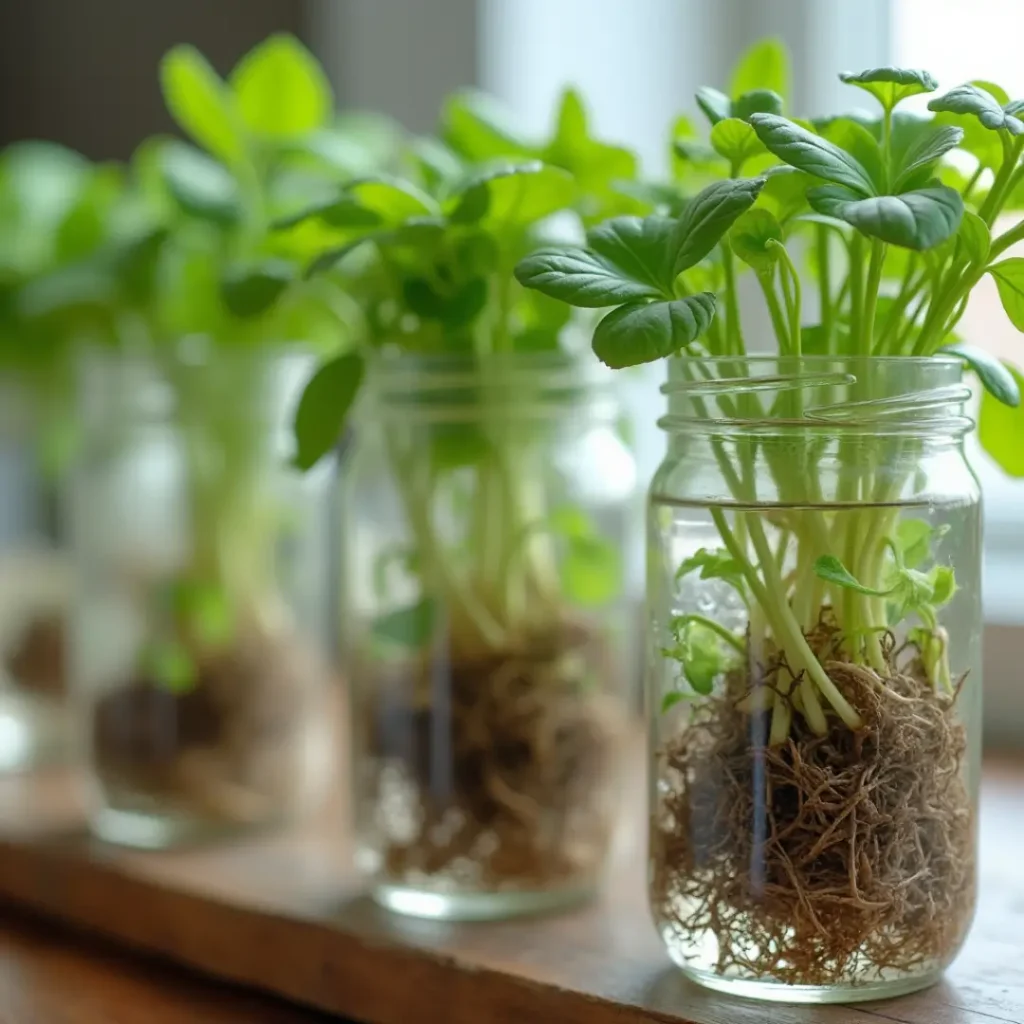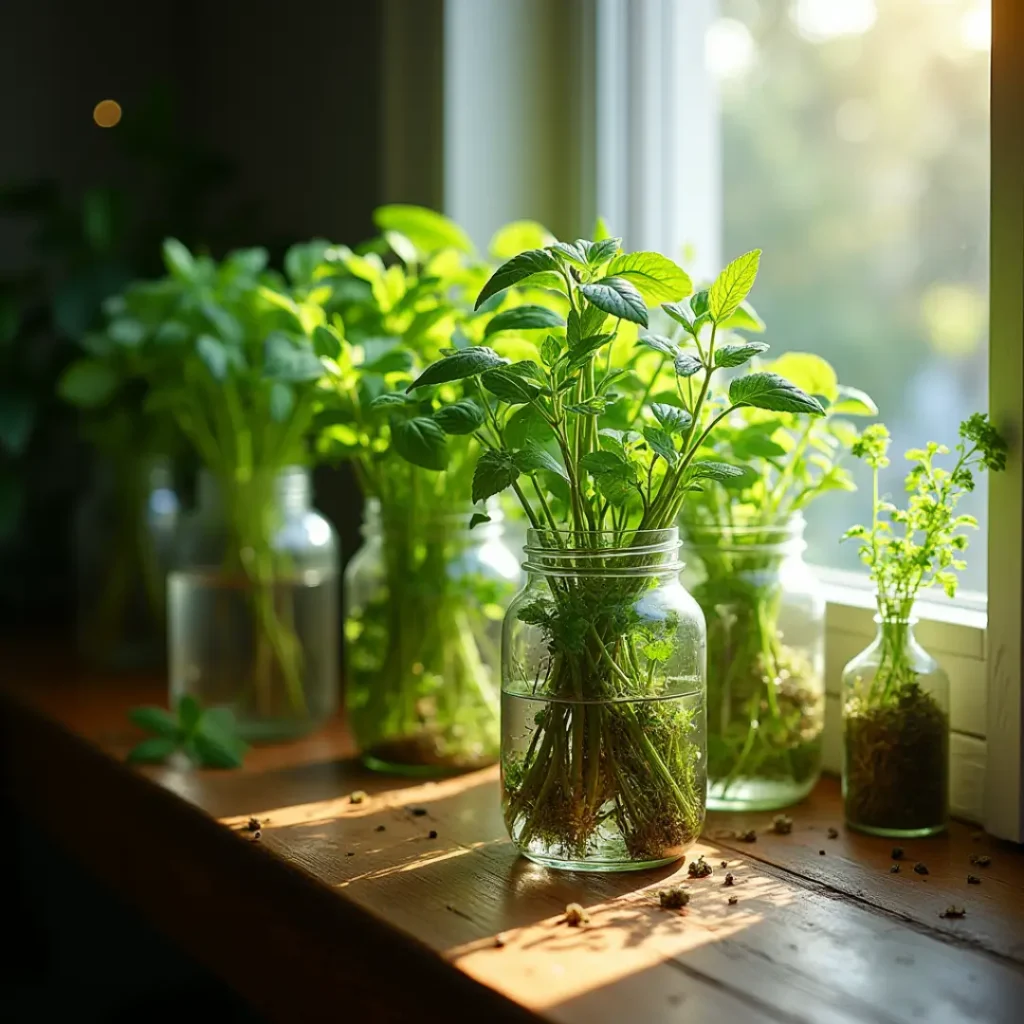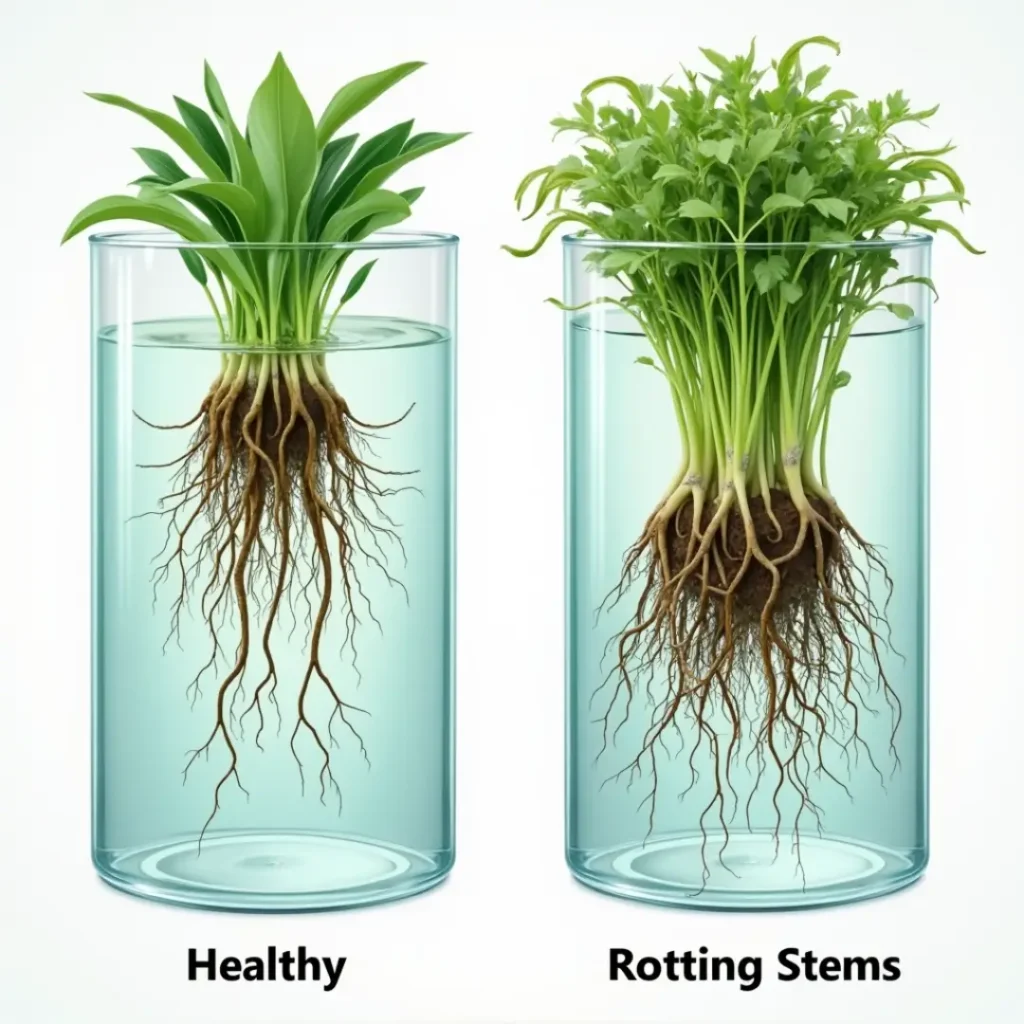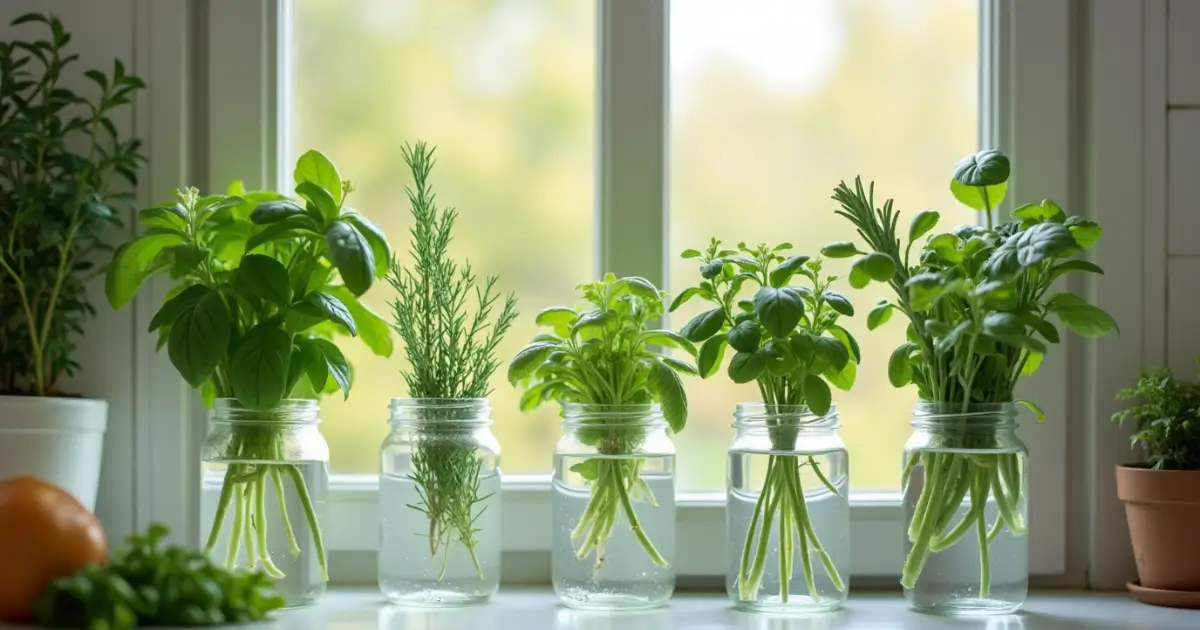Herbs You Can Grow in Water : 10 powerful & Must Try Winners !
1. Introduction :
Herbs you can grow in water offer a hassle-free way to enjoy fresh, flavorful greens year-round. No soil, no mess—just clean water, a sunny spot, and minimal effort. Whether you live in a small apartment, practice gardening from home, or simply love fresh herbs at your fingertips, water propagation is a perfect solution.
By growing herbs in water, you can ensure a continuous supply of basil, mint, oregano, and more without worrying about overwatering, pests, or soil maintenance. This method is also incredibly sustainable, as it allows you to regrow store-bought herbs and minimize waste.
In this guide, you’ll discover :
✔ The best herbs to grow in water for fast, healthy growth.
✔ A step-by-step setup to get started today.
✔ Essential care tips to keep your herbs thriving.
✔ Common problems and how to fix them.
By the end, you’ll be able to set up your own low-maintenance, water-based herb garden—perfect for a kitchen counter, windowsill, or even a hydroponic system. Let’s dive in !
Table of Contents
2. Understanding the Basics of Growing Herbs in Water :
Water-based herb gardening, also known as hydroponic or water propagation gardening, is a simple yet effective way to grow plants without soil. Instead of relying on traditional gardening techniques, this method makes gardening from home easier by allowing herbs to absorb nutrients directly from water, promoting healthy root development and continuous growth.
Key Benefits of Growing Herbs in Water :
- Saves Space : Ideal for apartments and small homes.
- Low Maintenance : No soil mess or frequent watering.
- Sustainable : Reduces waste and promotes eco-friendly gardening.
- Year-Round Growth : Keep herbs fresh regardless of the season.
Factors to Consider Before Starting :
- Water Quality : Use filtered or tap water that has been left to sit for 24 hours to remove chlorine.
- Sunlight Exposure : Herbs need 6-8 hours of indirect sunlight daily.
- Container Choice : Use glass jars, mason jars, or recycled bottles for best results.

3. Choosing the Right Herbs for Water Growth :
Not all herbs thrive in water. Some, like rosemary, take longer to root, while others, like mint, grow rapidly. Below are the best choices for water propagation:
10 Best Herbs to Grow in Water :
- Basil – Grows fast and produces flavorful leaves.
- Mint – One of the easiest herbs to propagate.
- Oregano – Provides a fresh, aromatic addition to dishes.
- Thyme – Takes longer to root but thrives well in water.
- Cilantro – Grows well but needs regular trimming.
- Parsley – Slower-growing but great for cooking.
- Rosemary – Requires patience but adapts well.
- Sage – Loves water but needs bright light.
- Lemon Balm – Grows quickly and adds a citrusy scent.
- Chives – Grows well and is perfect for garnishes.
4. Planting Guide & Setup (Step-by-Step Instructions) :
Step 1 : Gather Your Materials
- Fresh herb cuttings (4-6 inches long)
- A glass jar, bottle, or mason jar
- Clean, filtered water
- A sunny windowsill or grow light
Step 2 : Prepare the Herb Cuttings
- Snip a 4-6 inch stem from a healthy plant.
- Remove leaves from the lower half of the stem to prevent rotting.
- Optionally, dip the cut end in a natural rooting hormone like aloe vera.
Step 3 : Place in Water
- Fill a glass container with water and submerge the stem, ensuring the leaves stay above water.
- Use clear jars to monitor root growth.
Step 4 : Position for Optimal Growth
- Place in a sunny location where it gets indirect sunlight.
- Change the water every 3-5 days to prevent bacterial growth.
5. Essential Care & Maintenance :
To keep your herbs healthy, follow these simple care tips:
Water Changes :
- Replace water every 3-5 days to prevent stagnation.
- Use room-temperature water to avoid shocking the roots.
Light Requirements :
- Place herbs in an area with 6-8 hours of indirect sunlight.
- If natural light is insufficient, use LED grow lights.
Nutrient Supplementation :
- After 2-3 weeks, add a few drops of liquid plant fertilizer to enhance growth.

6. Common Problems & Solutions :
Problem 1 : Algae Growth
Solution : Use opaque or dark-colored jars to block light exposure.
Problem 2 : Root Rot
Solution : Change water regularly and ensure no leaves are submerged.
Problem 3 : Slow Growth
Solution : Move to a sunnier location or add nutrients.

7. Harvesting & Maximizing Your Garden’s Potential :
- Start harvesting once herbs have grown 6-8 inches tall.
- Trim leaves regularly to encourage new growth.
- Never remove more than 30% of the plant at once.
Regrowing Tips :
- If herbs become too tall, propagate new cuttings for continuous growth.
- Rotate jars occasionally to ensure even sunlight exposure.
8. Final Thoughts & Call to Action :
Growing herbs in water is an easy, sustainable way to enjoy fresh flavors at home. It requires minimal space and maintenance, making it perfect for urban gardeners or those new to indoor gardening. Start with easy-to-grow herbs like mint or basil and expand as you gain confidence.
Are you ready to start your water herb garden? Grab some jars, choose your favorite herbs, and enjoy a fresh supply of greens year-round!
9. Conclusion :
Water-grown herbs offer a practical and efficient way to enjoy homegrown greenery. Whether you’re short on space or looking for a hassle-free gardening from home solution, hydroponic herbs provide a rewarding and sustainable method to keep fresh flavors at your fingertips.
10. FAQs :
1. What are the easiest herbs to grow in water ?
The easiest herbs to grow in water are mint, basil, oregano, thyme, and green onions. These herbs root quickly and adapt well to water propagation, making them ideal for beginners.
2. How long does it take for herbs to root in water ?
Most herbs develop roots within 7 to 14 days. However, some, like rosemary, may take up to 4 weeks. Keeping the water clean and providing adequate sunlight helps speed up the process.
3. Do water-grown herbs need fertilizer ?
Yes, after 2-3 weeks, herbs may need a small dose of liquid plant fertilizer to replenish nutrients. Without soil, they lack access to natural minerals, so adding hydroponic nutrients can promote healthier growth.
4. Can I transfer water-grown herbs to soil ?
Absolutely! Once the roots are about 2 inches long, you can transplant them into soil. Gradually expose them to soil by mixing water and soil in a pot before fully transitioning them.
5. Why are my herb leaves turning yellow in water ?
Yellowing leaves are usually caused by nutrient deficiency, lack of sunlight, or stagnant water. Change the water regularly, provide indirect sunlight, and add a small amount of liquid fertilizer to restore plant health.
6. How often should I change the water ?
Change the water every 3 to 5 days to prevent algae buildup and bacterial growth. Using filtered or dechlorinated tap water also helps maintain healthier roots.
7. Do herbs grow faster in water than in soil ?
Yes and no. Some herbs, like mint and basil, root quickly in water and start producing leaves faster. However, long-term growth may be slower than in soil since they lack access to complex nutrients found in organic matter.
8. Can I grow herbs in water indefinitely ?
Yes, but with proper care. Since herbs don’t get natural nutrients from soil, you’ll need to prune them regularly, change the water, and supplement with nutrients every few weeks to keep them thriving.

